Key takeaways:
- Client feedback serves as a vital bridge between a designer’s creative vision and the client’s needs, fostering collaboration and improved outcomes.
- Listening to and integrating feedback can enhance both usability and aesthetic appeal, allowing designs to resonate better with users.
- Emotional connections in client feedback can reveal deeper insights, transforming critiques into actionable improvements that align with the client’s brand narrative.
- Embracing feedback as a roadmap for future projects encourages continuous learning and leads to more authentic and engaging design solutions.
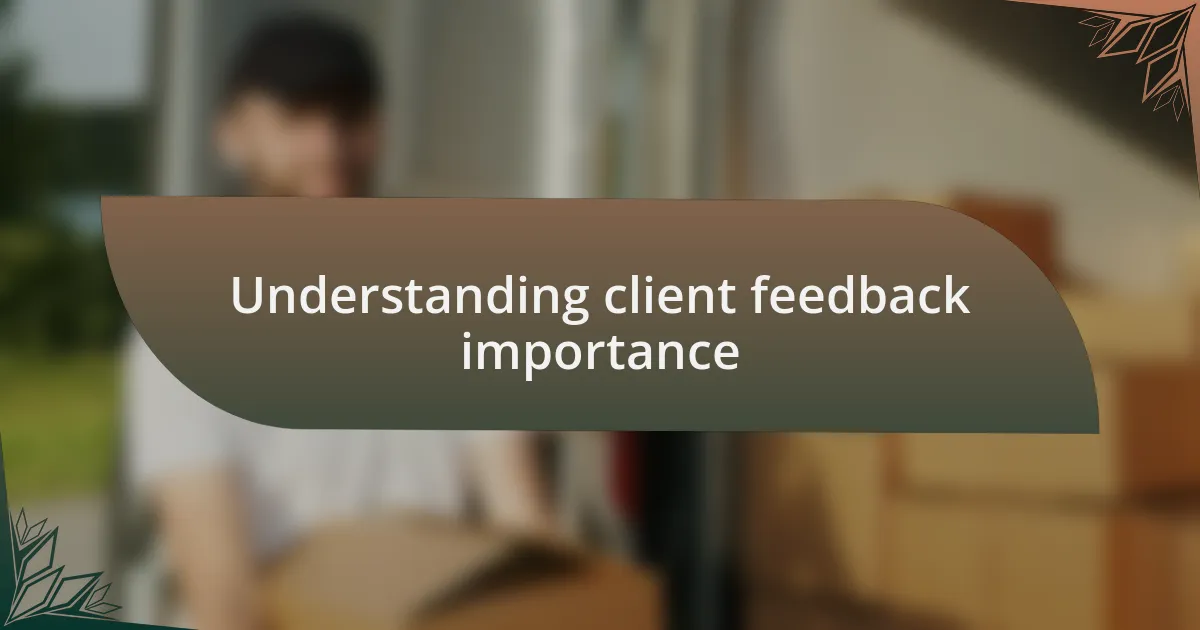
Understanding client feedback importance
Client feedback is like a compass steering our projects in the right direction. I vividly remember a time when I received critical feedback on a design I was proud of. It stung at first, but the insights offered by the client helped me see the project from their perspective, and that shift was invaluable.
I often reflect on how feedback shapes not just the final product but also my growth as a designer. Have you ever had a moment where someone’s perspective opened your eyes? For me, those moments are when I realize that client feedback is a bridge between my creative vision and the client’s needs, enhancing the collaboration and the end result.
Understanding the importance of client feedback requires us to embrace a mindset of humility. I’ve learned that my initial ideas may not always align with the client’s vision or market needs. This realization has made feedback a crucial part of my process, emphasizing that every comment is an opportunity to elevate my work to new heights.
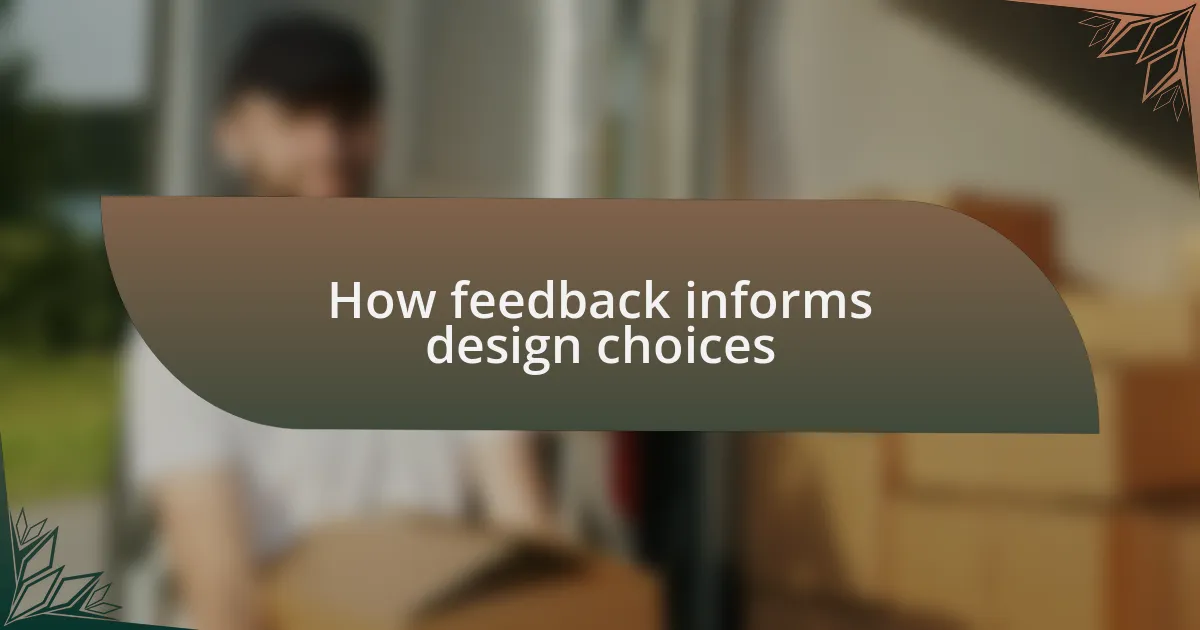
How feedback informs design choices
When I received a request to redesign a website that I thought was already visually appealing, I had to pause and listen. The client’s feedback pointed out navigation issues that I had overlooked. This experience taught me that sometimes, what seems aesthetically pleasing to me may not be user-friendly; this realization shifted my approach to prioritize usability in my designs.
There was a project where the client requested bold typography, which initially felt like a departure from my usual style. After implementing their suggestions, I was taken aback by how much it energized the overall design. This moment reinforced my belief that feedback is not just about criticism; it can ignite creativity and inspire innovation in ways I never expected.
I often ponder: How can I maintain the balance between my artistic integrity and the client’s vision? In my experience, it’s about finding harmony. Each piece of feedback I receive is a window into the client’s world. By integrating their insights, I can create designs that resonate not only with them but also with their audience, making the project truly collaborative.
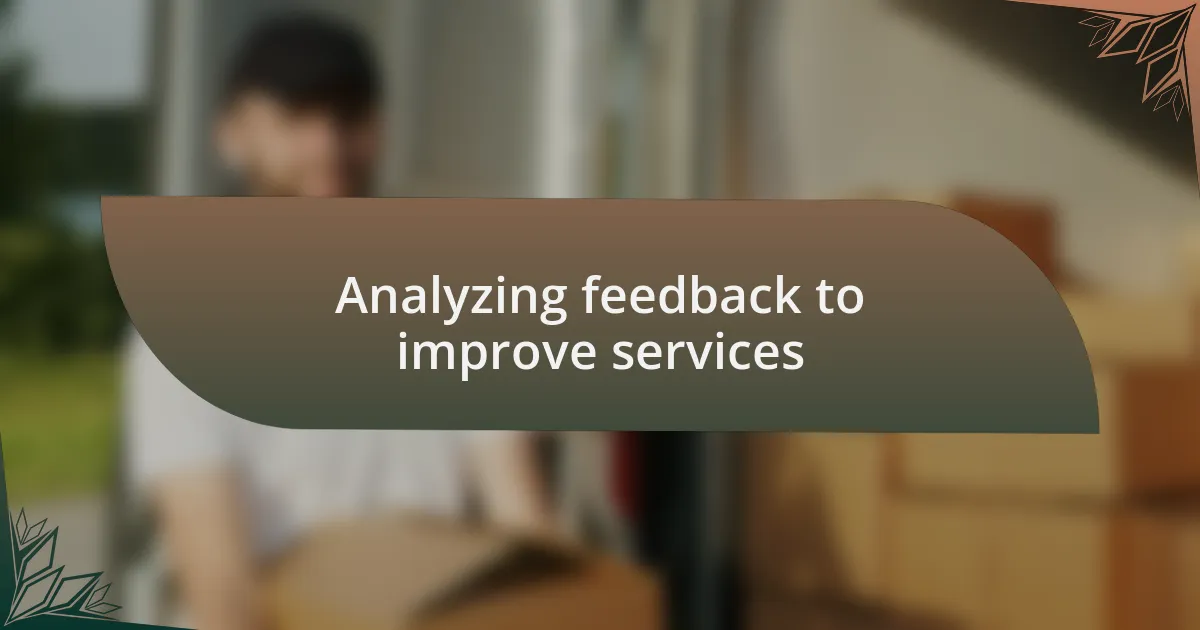
Analyzing feedback to improve services
When analyzing client feedback, I often dive deep into the emotions behind their words. For instance, I once encountered a client who expressed frustration over how their website’s layout made it hard for them to convey their message. Listening closely, I realized that my design didn’t reflect their passion for their work. Understanding the emotional connection they had with their brand opened my eyes to the necessity of aligning my designs with their vision, transforming their concerns into actionable insights.
It’s fascinating how seemingly small pieces of feedback can lead to significant changes. There was a time when a client suggested adjusting the color scheme for better contrast. At first, I hesitated, thinking the original palette was perfect. However, after taking a moment to analyze the client’s rationale, I understood that their audience had specific needs for accessibility. This led to an enhanced user experience that ultimately boosted engagement, showcasing just how crucial it is to embrace feedback with an open mind.
I often ask myself: What did I miss that the client sees? This introspection drives me to embrace their feedback as a vital tool for growth. Each comment not only refines my design process but also enriches my practice. It’s a continuous learning experience, and I’ve come to cherish the dialogue that feedback fosters, as it places the end-user’s experience at the forefront of my design strategy.
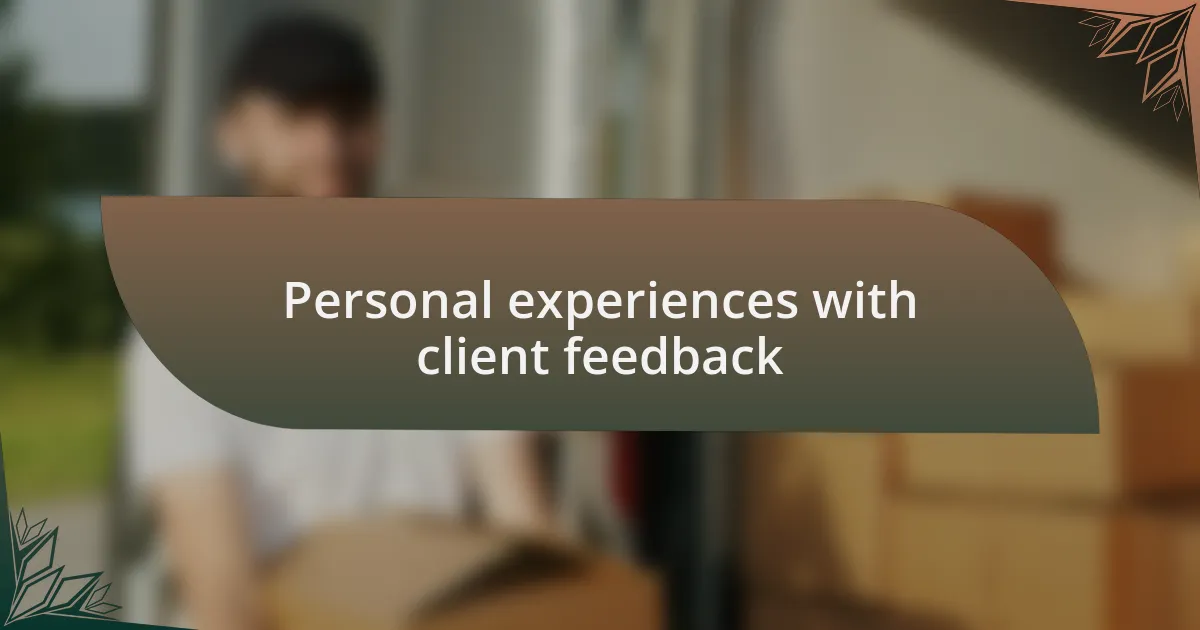
Personal experiences with client feedback
I remember a project where a client didn’t hold back in sharing their thoughts on the design drafts. At first, it stung a bit; I believed I had nailed it. But as they elaborated on their vision, I understood their perspective and the deeper story behind their brand. This moment taught me that client feedback often unveils layers I might overlook, prompting me to approach my work with a broader lens.
One particular instance stands out when a client shared how overwhelmed they felt with the navigation layout. Instead of dismissing their feelings, I took it as a challenge to address their concerns creatively. It struck me that my role wasn’t just to design, but to facilitate ease and comfort for users. This experience reshaped my approach, turning feedback into an ally rather than a hurdle.
Reflecting on past feedback, I often ask myself, “How can I turn this into an opportunity?” The truth is, every critique holds a nugget of wisdom that can propel my designs forward. By embracing these insights, I’ve not only improved my skills but also developed a deeper trust with my clients, knowing they feel heard and valued.
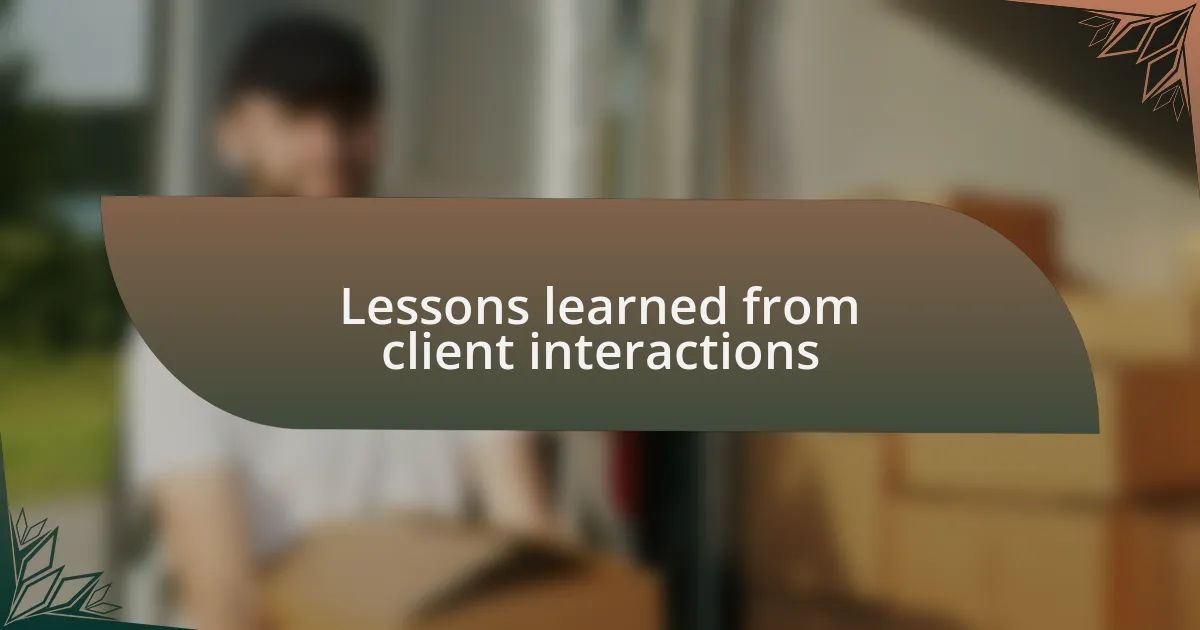
Lessons learned from client interactions
Engaging with clients has consistently opened my eyes to new possibilities in design. For instance, there was a time when I presented a sleek website concept that I was particularly proud of. A client pointed out how the color scheme just didn’t align with their brand’s warmth and approachability. Initially, I felt defensive, but after a deeper discussion, I realized that their passion for their brand’s identity was a crucial aspect I had underestimated. This taught me that incorporating client feedback means allowing their vision to shape the project, which ultimately leads to a more authentic outcome.
Another memorable lesson came from a client who expressed frustration with the initial draft of their portfolio site. They felt that even though it was visually appealing, it didn’t tell their unique story. Reflecting on this, I acknowledged that I had focused too much on aesthetics instead of the narrative. This interaction reminded me of the importance of storytelling in design. How can we ensure a website resonates if it doesn’t communicate the essence of the person behind it? It reinforced my commitment to prioritize their stories in future projects.
Through these lessons, I’ve found that every interaction contributes significantly to my growth as a designer. Feedback isn’t just constructive criticism; it’s an invitation to collaborate, challenge my assumptions, and refine my craft. How often do we overlook these opportunities thinking we know best? Every critique is a chance to innovate, pushing me to explore avenues I hadn’t considered before.
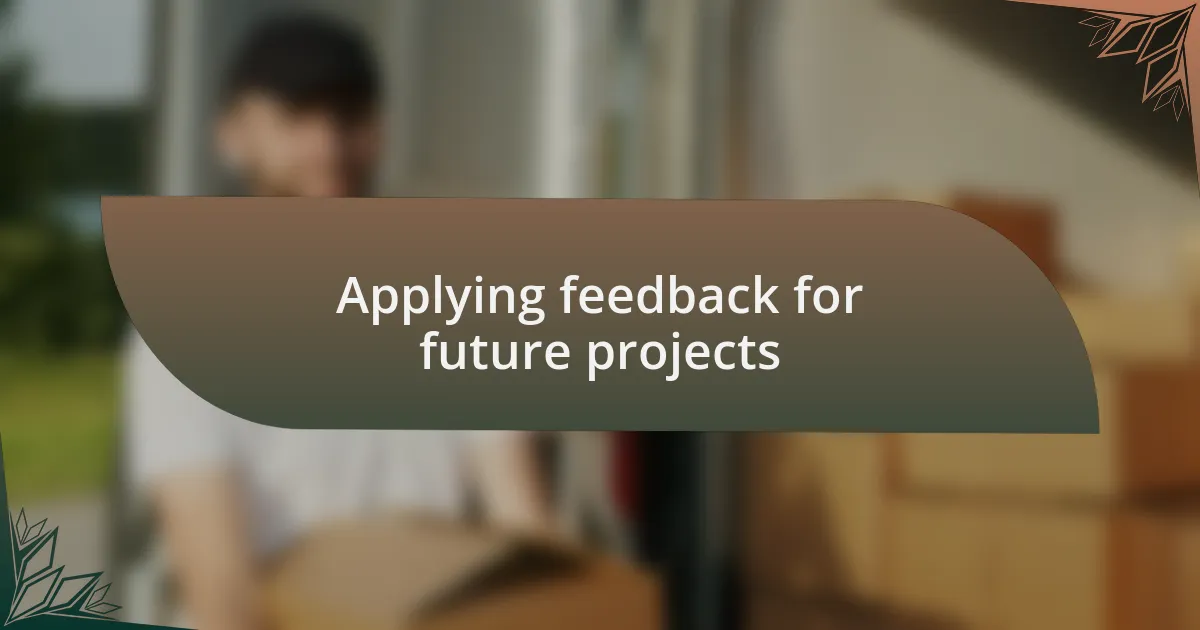
Applying feedback for future projects
When applying feedback to future projects, I’ve learned to embrace it as a roadmap rather than a hurdle. There was a time I redesigned a non-profit’s website, and after a critical review session, a board member pointed out that our navigation was confusing for older users. Initially, I thought our design was intuitive. However, after taking that advice seriously and revisiting the layout, I realized how much clearer and user-friendly it could be made. This change not only improved usability but also made me more mindful of varying user experiences for future designs. How can we create spaces online that everyone, regardless of their tech-savvy, can navigate with ease?
In another situation, a tech startup I worked with provided feedback on the tone of their site’s content. They wanted it to feel less formal and more like a conversation. At first, I hesitated, worried that it might detract from their credibility. But after incorporating a friendlier tone, the response from their audience was overwhelmingly positive. This taught me the power of voice in web design. It made me think: how often do we restrict ourselves by adhering strictly to conventions? Adapting our voice to meet a client’s needs can transform the entire user experience.
I now approach every project with an open heart and mind to feedback. For one client, integrating their suggestions led to a redesign of their homepage that not only mirrored their brand identity but also enhanced engagement metrics significantly. It’s exhilarating to see how these adjustments bring visions to life. Have you ever considered how welcoming client input can elevate your work? Each critique is not just feedback; it’s an opportunity for growth and deeper connection with the users we aim to serve.